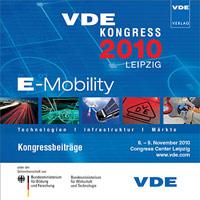Entering the electric mobility market: an analysis of commercial vehicle fleets
Konferenz: VDE-Kongress 2010 - E-Mobility: Technologien - Infrastruktur - Märkte
08.11.2010 - 09.11.2010 in Leipzig, Deutschland
Tagungsband: VDE-Kongress 2010
Seiten: 6Sprache: EnglischTyp: PDF
Persönliche VDE-Mitglieder erhalten auf diesen Artikel 10% Rabatt
Autoren:
Schulz, Alexandra; Marker, Stefanie; Schindler, Volker (TU Berlin, Germany)
Inhalt:
Attractive mobility concepts have to be developed to guarantee a successful introduction of electric vehicles for different user groups and to compensate disadvantages of actual electric vehicles such as high cost and limited range. In this context it seems reasonable to differentiate between private and commercial fleets according to their individual usage patterns. Commercial fleets have some advantages over private users regarding the use of battery-electric vehicles (BEV) and range extender vehicles (RE-EV): they often have a limited diurnal driving distance, predictable routes and defined parking space to recharge the vehicles. This prompted the BMWi-funded NET-ELAN project group at the Department of Automotive Engineering at the TU Berlin to analyse a variety of commercial fleets. In a first step these fleets were categorised. Their characteristics were weighted according to their electrification potential by considering variables such as parking space availability, fleet size, operation area, average speed, range and the possibility of route prediction. Statistical data allowed a first estimate on suitable fleets. Additionally, German and European fleet experiments with electric vehicles of the last 15 years were evaluated and their results summarised, among them tests by UPS and Groupe La Poste which intend to explore energy/CO2 saving in postal services. Local emission-free delivery concepts like ELCIDIS purpose the logistics in environmentally sensitive areas. To study the usage patterns of real fleets, applicable fleets were investigated in more detail: several vehicles of each fleet were equipped with veLOG data loggers to document their real usage behaviour over a longer period (up to four weeks). Afterwards, the data set was analysed regarding different assumptions concerning vehicles (BEV and RE-EV) and charging strategies. With the help of an extensive vehicle model energy and power demand could be identified and evaluated. Finally, the lifetime costs for purchasing and using the vehicles were determined (Total Cost of Ownership). Up to now, this approach was used to analyse two fleets, more will follow during the next year. In summary, this analysis permits to state which commercial fleets are worth to be electrified and to which extent.


